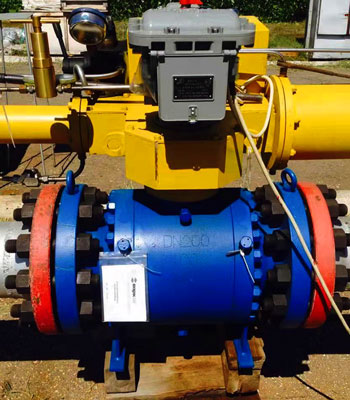There are numerous ways to test valve leakage, but the most common tests are:
While zero leakage is rare, the standards allow the Maximum Allowable Leakage for valves after they undergo specific tests. Every year, industrial valve manufacturers in Indonesia conduct thousands of tests on critical valve components. The main objective of the valve leak tests is to identify two types of leaks:
External leakage which is verified by the shell test to check the pressure inside the valve to the outer atmosphere.
Internal leakage which is checked with a seat leakage or closure test. Internal leakage occurs around the valve seat or within the piping system.
Despite the numerous processes available to check valve leakage, some mistakes can hamper the process. Indonesia's top valve manufacturers list the common blunders made during valve leak tests.
Also Read : The Rising Demand For Industrial Valves

1.Testing in the wrong phase of production
It is common for manufacturers to test the valve in the very early or later stages of production. Experts state that the ideal stage of testing each component is to do it before they are assembled. A good example of this is to test the transmission before assembly to avoid redoing it if the housing fails in the final test.
2. Testing a contaminated valve component
As a rule of thumb, leak tests should be carried out for new, unused valve components to achieve success. When used valves are tested, the results can be faulty. This is because the small leaks will already be clogged with oil or water, making them difficult to identify.
The best way to test used valves is to clean thoroughly and dry them to ensure the cleaning fluid does not clog any potential leaks before the valves are subjected to testing.
3. Using wrong test processes
Most often than not, the simple rule of adopting the right leak test for the right type of valve is not followed. For example:
4. Fluctuating test pressures and temperatures
Temperature and pressure fluctuations are common in leak tests, but they have to be duly monitored and maintained. Even the minutest change in temperature can alter the measurable leak rate and change the result. The increase in temperature can also influence the size of the leak. As with pressure, the use of automated tracer gas filling systems guarantees that the test piece is subjected to constant pressure. It is also advisable to test the piece only after the prior evacuation of gas.
5. Underestimating stringer leaks and gross leaks
Stringer leaks are capillary-like corridors and can be identified by using helium gas and assessing the time for its distribution and emergence. Not allowing enough time between filling up and testing will make it difficult to spot stringer leaks. In a gross leak, the helium will escape from the test piece before the actual test interval. This mistake is rectified by evacuating the vacuum test chamber and the helium at the same time.
6. Not consulting experts
Leak valve tests require expert supervision. It is not a task for inexperienced and amateur technicians. Manufacturers must generously invest in expert guidance and professional support if they want to ensure top quality of the valves and avoid expensive product recalls. A negative leak test guarantees product efficiency. All test methods and processes must be reliable to provide this guarantee.
For industries in Indonesia looking to invest in valves that guarantee durability, efficiency, and affordability, Oilway is a perfect choice. We operate from multiple countries in Asia and around the globe, designing and fabricating a wide range of industrial valves at cost-effective prices.
Let's discuss your valve requirements. Call us @+86-21-69891289 for a price quote.

